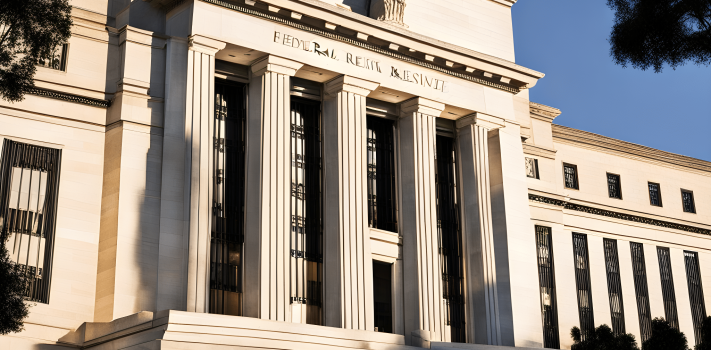Chair Powell stands firm on assertion of being Data Driven. Balancing a congratulations on progress, while hinting on more to come.

On Wednesday, the Federal Reserve resumed its interest rate hikes, raising the benchmark federal-funds rate by a quarter-percentage point to a range between 5.25% and 5.5%, which is now at a 22-year high.
This marks the 11th increase since March 2022 when rates were lifted from near zero. The decision comes after a brief pause in rate increases last month as officials debated the adequacy of their efforts to combat inflation. Although there were minimal changes to the post-meeting statement with no new guidance about future policy plans, Fed Chair Jerome Powell emphasized that the full effects of their tightening have yet to be felt.
Data Driven
Robust economic growth in recent months has posed a challenge for Powell to signal that Wednesday’s increase will be the last of the current tightening cycle, as many investors had anticipated. Conversely, a recent slowdown in inflation has made it difficult for central bank officials to finalize plans for any additional rate increases.
During their previous meeting in June, officials held rates steady but communicated their intention to implement two more increases this year. The Federal Open Market Committee is scheduled to meet three more times in 2022, with the next meeting set for September.
Inflation
Inflation, which reached a 40-year high last summer, has since receded, with the consumer-price index climbing 3% in June from a year earlier, far below the June 2022 peak of 9.1%. The core consumer-price index, which excludes volatile food and energy categories, posted its smallest monthly gain in more than two years in June, but it still rose 4.8% from a year earlier.
The Fed’s target is to keep inflation at 2% over time, as measured by its preferred gauge, the personal-consumption expenditures price index. To combat inflation, the Fed uses rate hikes to slow down the economy, resulting in tighter financial conditions such as higher borrowing costs, lower stock prices, and a stronger dollar.
Throughout 2022, the Fed aggressively raised interest rates and then slowed the pace by the end of the year. Holding rates steady in June allowed for a further reduction in the pace of increases and an opportunity to assess the impact of those rapid moves, especially following concerns that banking stress in the spring might constrain credit further.
Unanimous, with concerns…
In recent months, disagreement among officials over the pace of rate increases within the Federal Reserve has been evident. While all 11 voting members of the policy-setting Federal Open Market Committee agreed to hold rates steady at the previous meeting, a written account of the meeting revealed that some of the 18 voting and nonvoting officials would have supported a rate rise at the June meeting.
Federal Reserve officials convene eight times a year, roughly twice each quarter. Last month, Powell made it clear that he wouldn’t rule out raising rates at consecutive policy meetings. However, he also mentioned that if the economy evolves in line with current expectations, a slower, quarterly pace of rate increases could be anticipated.
A few Fed officials have expressed their preference for raising rates again at the central bank’s September meeting. In June, Fed officials raised their projections for interest rates, partly due to their anticipation of less progress on inflation. However, if inflation continues to cool, there may arise questions about whether another rate rise later this year will be necessary.
Inflation is coming down, but for how long?
Fed officials will approach the situation with caution, particularly considering the recent upturns in energy and commodity prices, despite the recent decline in inflation. A potential slowdown in core inflation in the coming months could pose a new challenge for the Fed if officials have reason to believe that the improvement will be short-lived, especially if wage growth remains strong. Policymakers must carefully navigate the situation to ensure they can effectively hit their inflation target.
The risk of loss in trading futures and/or options is substantial and each investor and/or trader must consider whether this is a suitable investment. Past performance, whether actual or indicated by simulated historical tests of strategies, is not indicative of future results.









